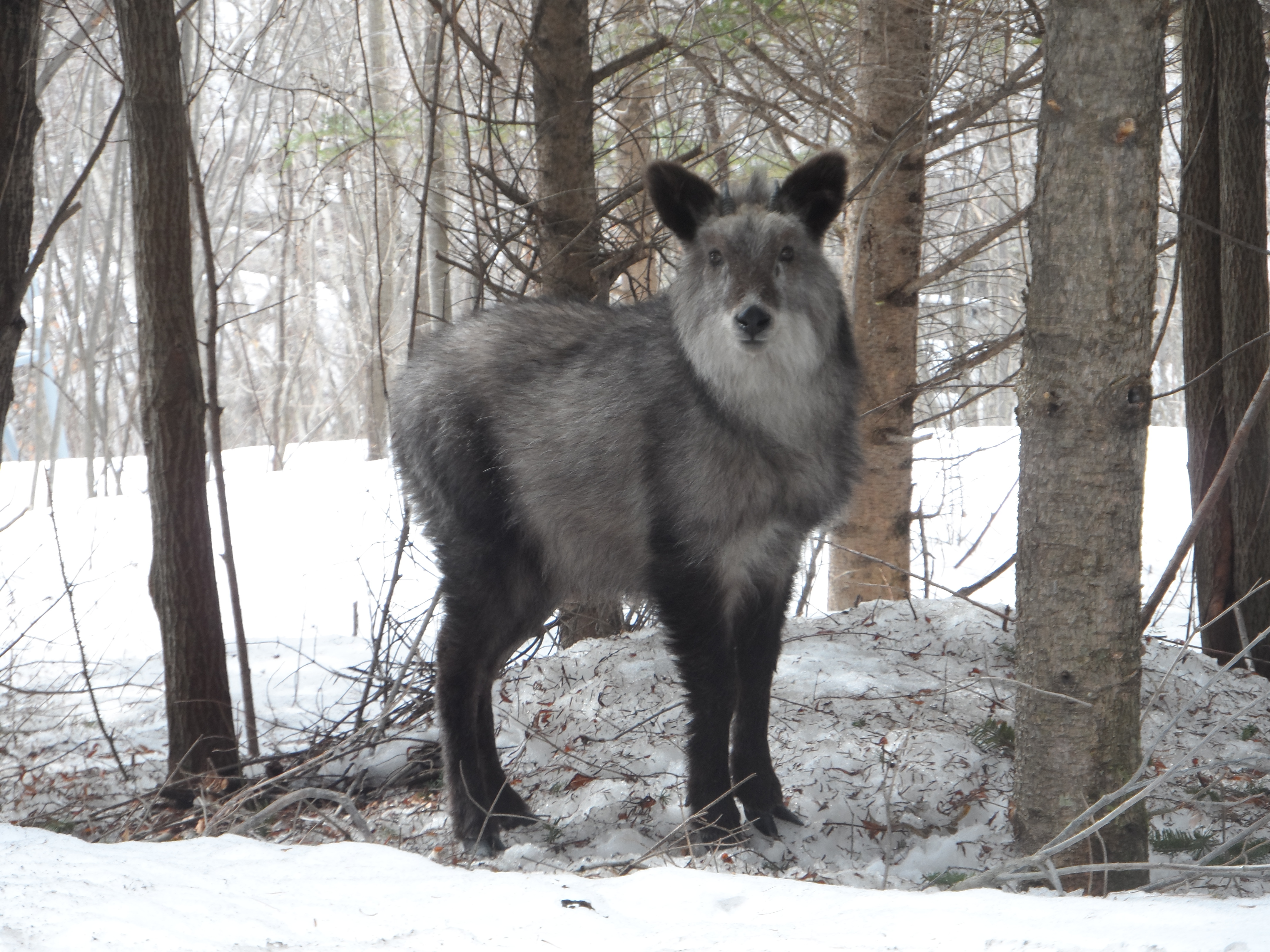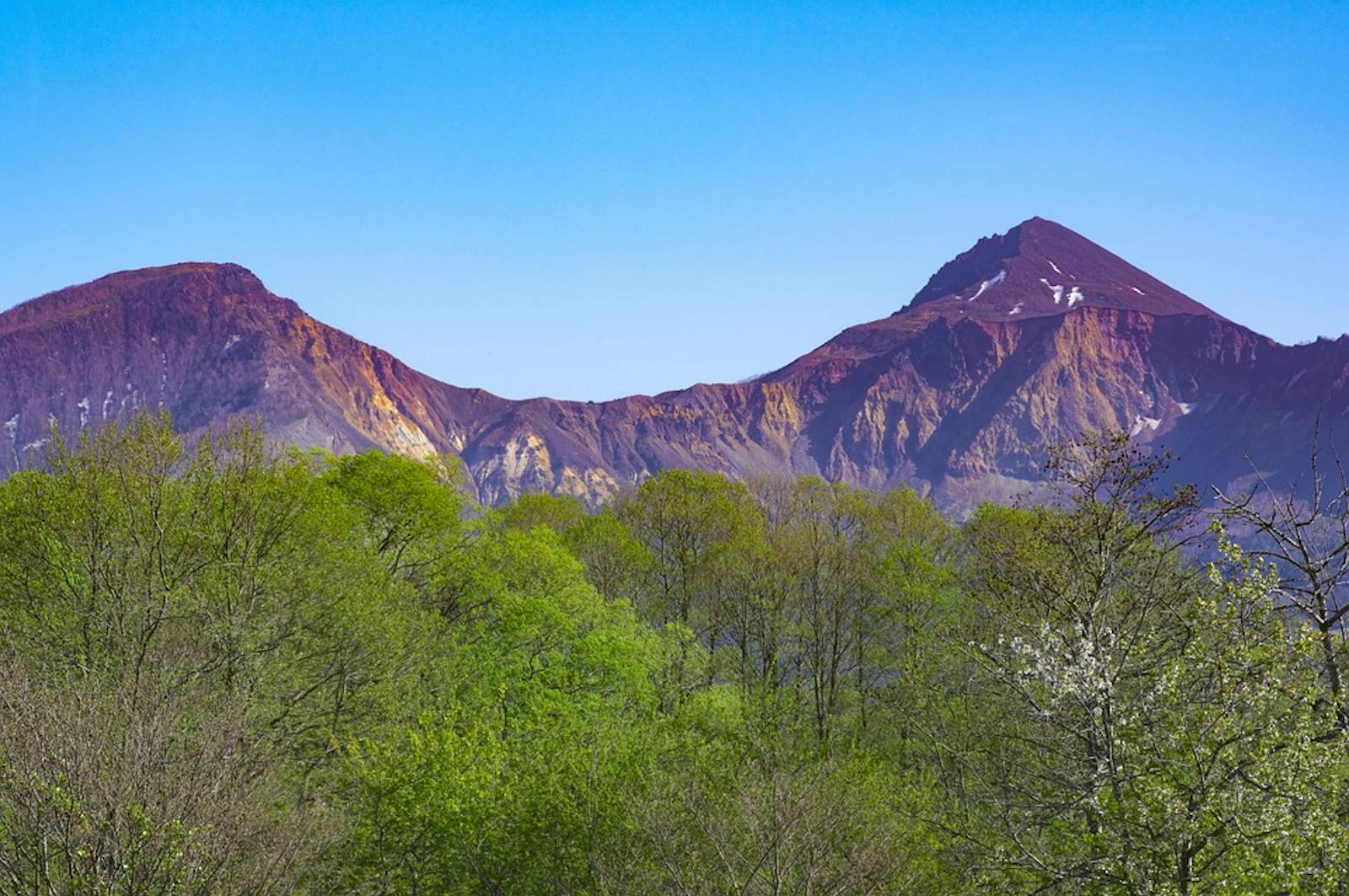Nihonkai Montane Deciduous Forests
The ecoregion’s land area is provided in units of 1,000 hectares. The conservation target is the Global Safety Net (GSN1) area for the given ecoregion. The protection level indicates the percentage of the GSN goal that is currently protected on a scale of 0-10. N/A means data is not available at this time.
Bioregion: Japan Forest Islands (PA47)
Realm: Eastern Eurasia
Ecoregion Size (1000 ha):
8,249
Ecoregion ID:
671
Conservation Target:
80%
Protection Level:
4
States: Japan
Vast swathes of deciduous forests characterise this mountain ecoregion in Japan, bursting with pink and white blossoms from the Japanese cherry in spring and transitioning to a spectacular show of crimson and orange in the autumn. Japanese macaque, Asiatic black bears and flying squirrels pass between the trees whilst eagles fly overhead and endemic salamanders scurry along the ground. The rich ecosystems of this region face a major threat from climate change and booming populations of sika deer which are now present over much of the country.
This mountainous ecoregion lies predominantly within Japan’s largest island—Honshu—with a small section in the southerly tip of Hokkaido beneath the Kuromatsunai line. The climate is seasonal and temperate, reaching highs of 30ºC in summer and dropping to daily averages of around 3ºC in winter, with sub-zero temperatures common at night. Northern areas are slightly cooler and drier, although precipitation below 100 mm per month is typical across the entire region. Volcanic mountains typify much of the landscape, including several active volcanoes such as Mount Asama which, standing at 2,568 m, is the most active on Honshu and from which plumes of smoke can frequently be spotted.
Deciduous forests are dominated by the endemic Japanese beech, katsura, Japanese hornbeam and Japanese cherry, which is celebrated in one of Japan’s most ancient festivals, the hanami or ‘flower viewing’ festival. In spring, these cherry trees blossom to produce delicate white or pink blossoms, whilst in autumn, the landscape is transformed into a blaze of red, orange and brown as the leaves change their colour before falling. Mongolian oak, Japanese chestnut and jolcham oak occur in some areas at lower elevations, whilst undergrowth is largely dominated by the evergreen bamboo Sasa kurilensis. In Tadami Biospshere reserve, a rare species of lily, Lilium rubellum, can be found in the grasslands around Mt. Asakusadake and Mt. Aizu-Asahidake.

The flagship species of the Nihonkai Montane Deciduous Forests ecoregion is the Japanese serow. Image credit: Creative Commons
In the snowy mountains typical of this ecoregion, the dense grey-brown coat of Japanese macaque allows them to survive in the northernmost distribution of any non-human primate on the planet. Japanese dwarf flying squirrels and Japanese serow—a small relative of goat—can both be found and are endemic to Japan, whilst sika deer, the vulnerable Asiatic black bear and near-threatened Japanese weasel are present across much of the region.
Hodgson’s hawk-eagles soar over the rocky mountains, the endemic azumi shrew occupies a very limited distribution in central Honshu, and in the north of the island, an endemic species of salamander—Hynobius nigrescens—occurs from sea level up to 2,500 m. Grey bunting, alpine accentor, Japanese black woodpeckers and the vulnerable yellow bunting are some notable bird species across the region.
In response to increasing demand for timber following the end of the Second World War, there was widespread clearance of Japan’s primary forests and replacement with species such as Japanese cypress and cedar. Forestry continues in the region, although much of Japan’s timber is now imported from overseas. Protected areas in the ecoregion cover nearly one-third of the land, and the UNESCO designated World Heritage Site of Shirakami-Sanchi contains East Asia’s largest remaining virgin beech forests. The Japanese serow was awarded ‘national monument’ status in 1955, which banned all hunting of the species until the law was amended in recent years to illegalise hunting in just 13 protected areas across Japan.
One of the major pressures facing this forest ecosystem is the rapid increase in sika deer number which cause significant damage to forested and agricultural areas. Japan’s ageing human population and subsequent abandonment in many places of traditional satoyama areas—mosaic landscapes of cropland, grassland and forests—have been cited as a reason for their potential growth, as neglected farmland creates ideal feeding conditions for the mammal.
Climate change is expected to compound this problem further as warming temperatures reduce snowfall and allow the deer to reach higher elevations. Rising temperatures also pose a major threat to the region’s beech trees which are already found in colder areas and for which there is little habitat left to accommodate an upwards shift in range.
Priority conservation actions for the next decade will be to: 1) implement measures to control feeding damage done by sika deer; 2) restore degraded land to improve resilience of ecosystems and carbon storage in response to global climate change; and 3) work towards the mainstreaming of conservation values in society and encourage more sustainable land practices.
Citations:
1. Government of Japan (2014). ‘Fifth National Report of Japan to the Convention on Biological Diversity’. [Online]. Available from: https://www.cbd.int/doc/world/jp/jp-nr-05-en.pdf [Accessed 20/12/2019]
2. Japan Forest Agency (2019) ‘State of Japan’s Forests and Forest Management’ [Online]. Available from: https://www.maff.go.jp/e/policies/forestry/attach/pdf/index-8.pdf [Accessed 20/12/2019]
3. UNESCO (2019) ‘Shirakami-Sanchi’. [Online]. Available from: https://whc.unesco.org/en/list/663/ [Accessed 20/12/2019]

.png?auto=compress%2Cformat&w=300)

